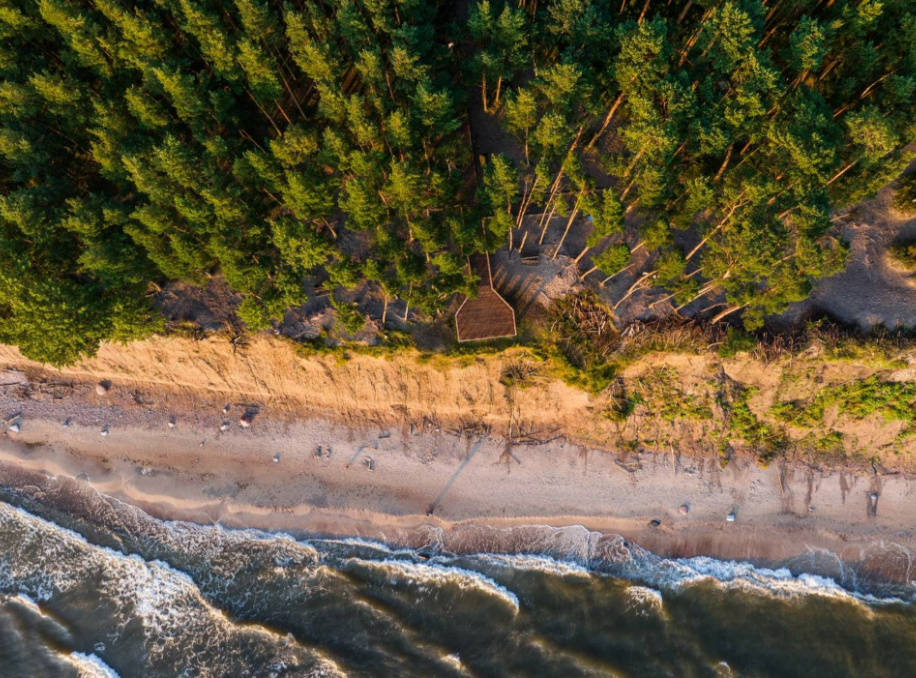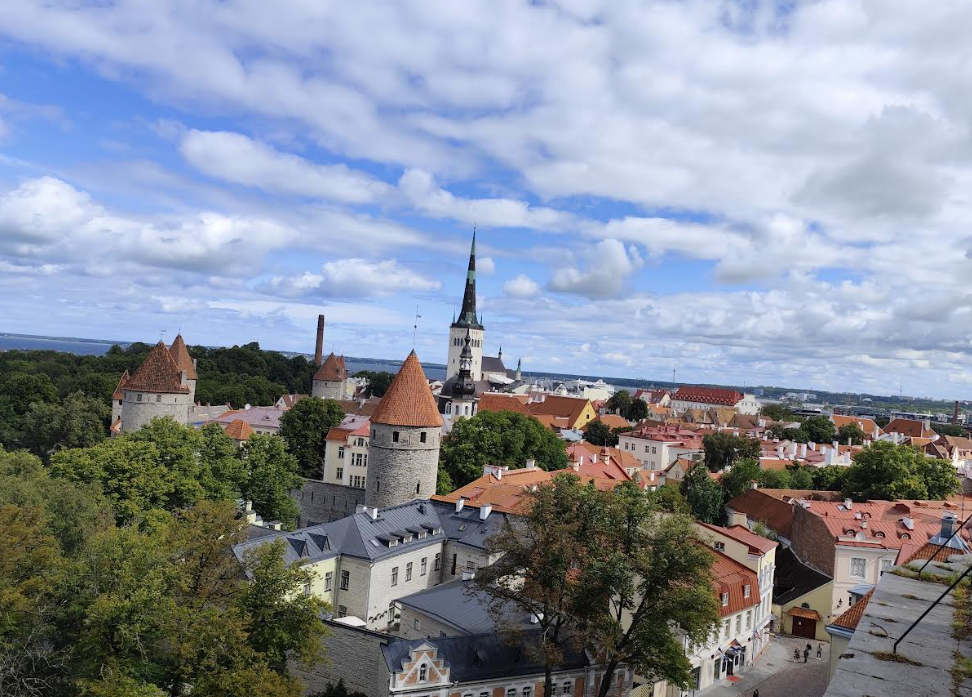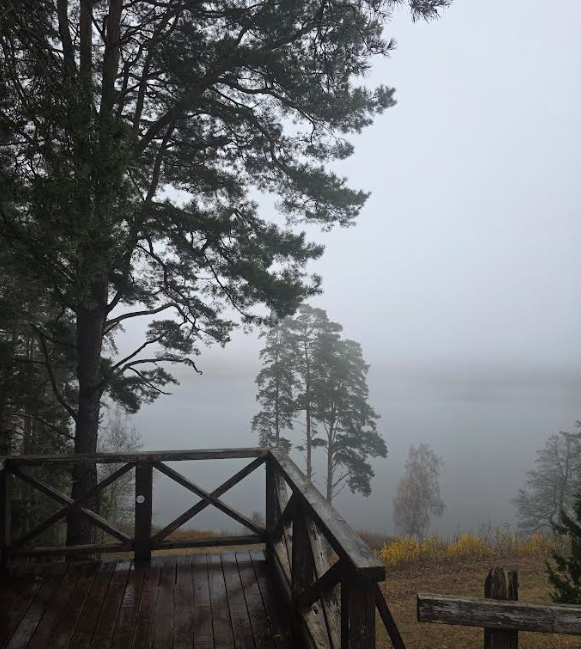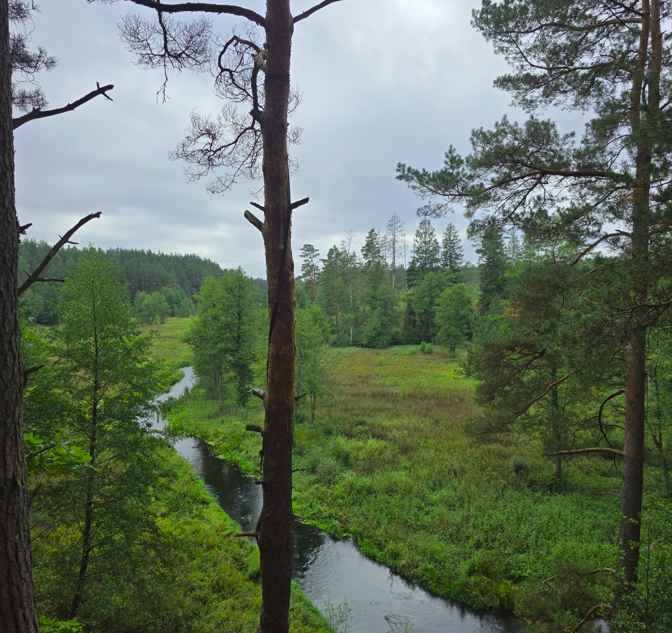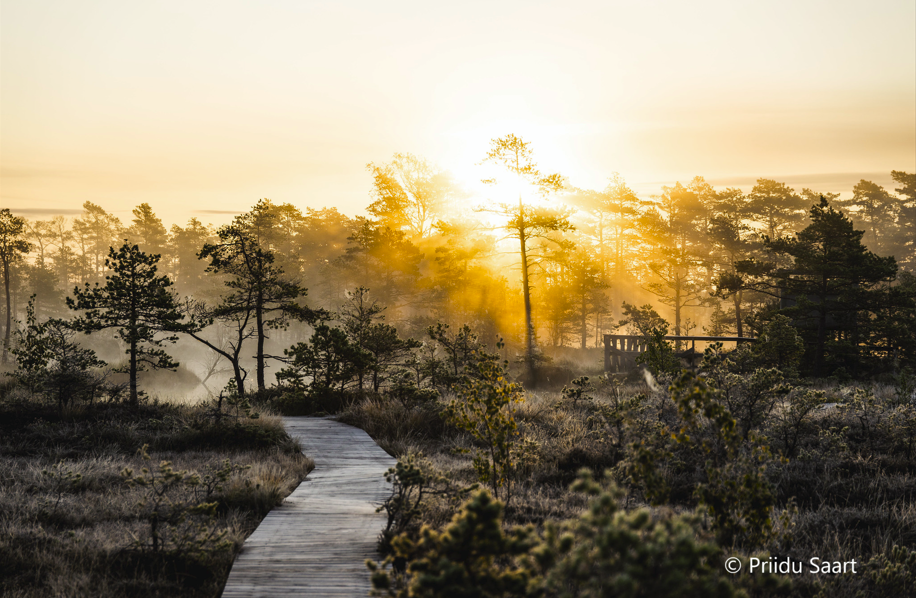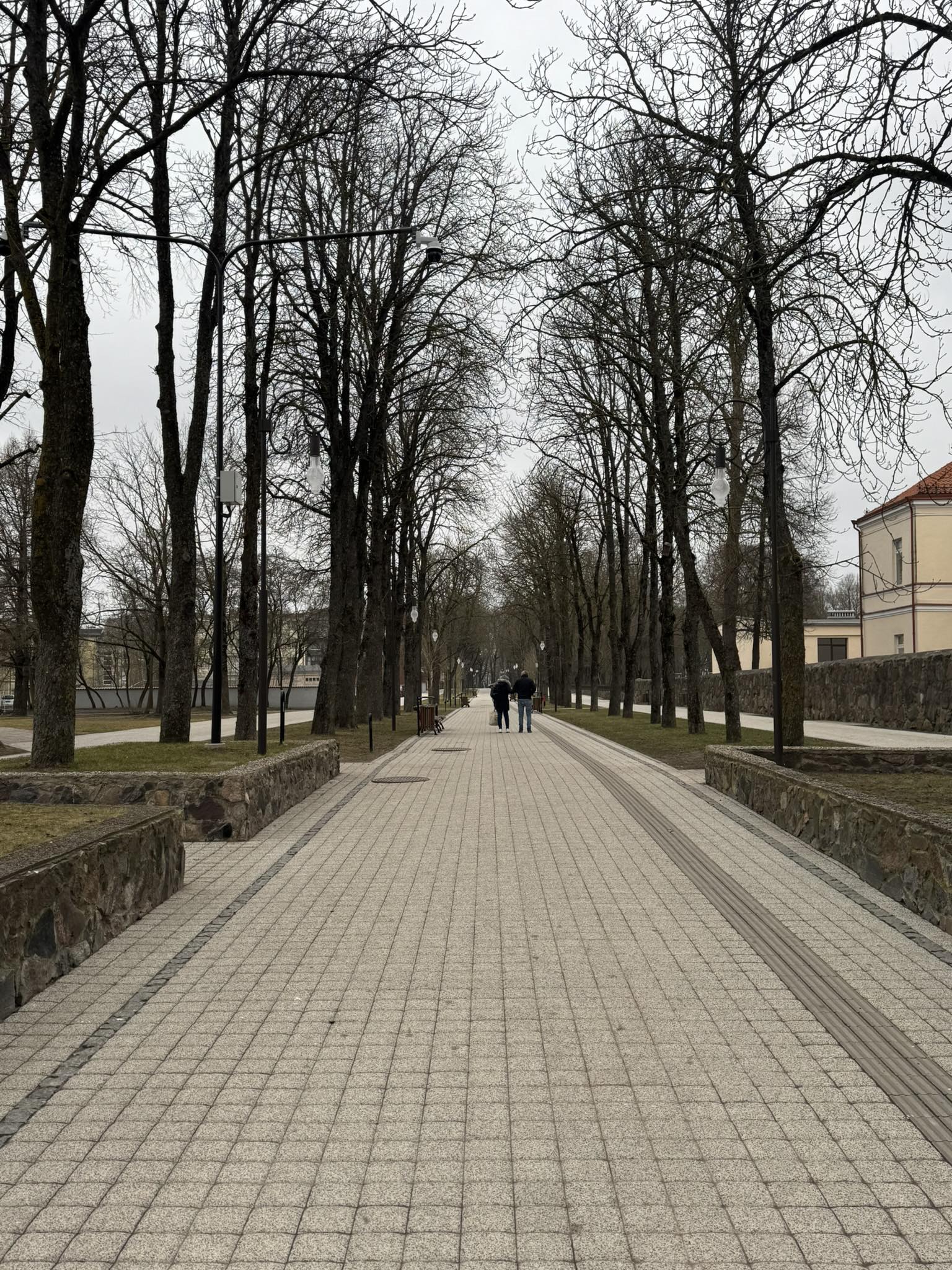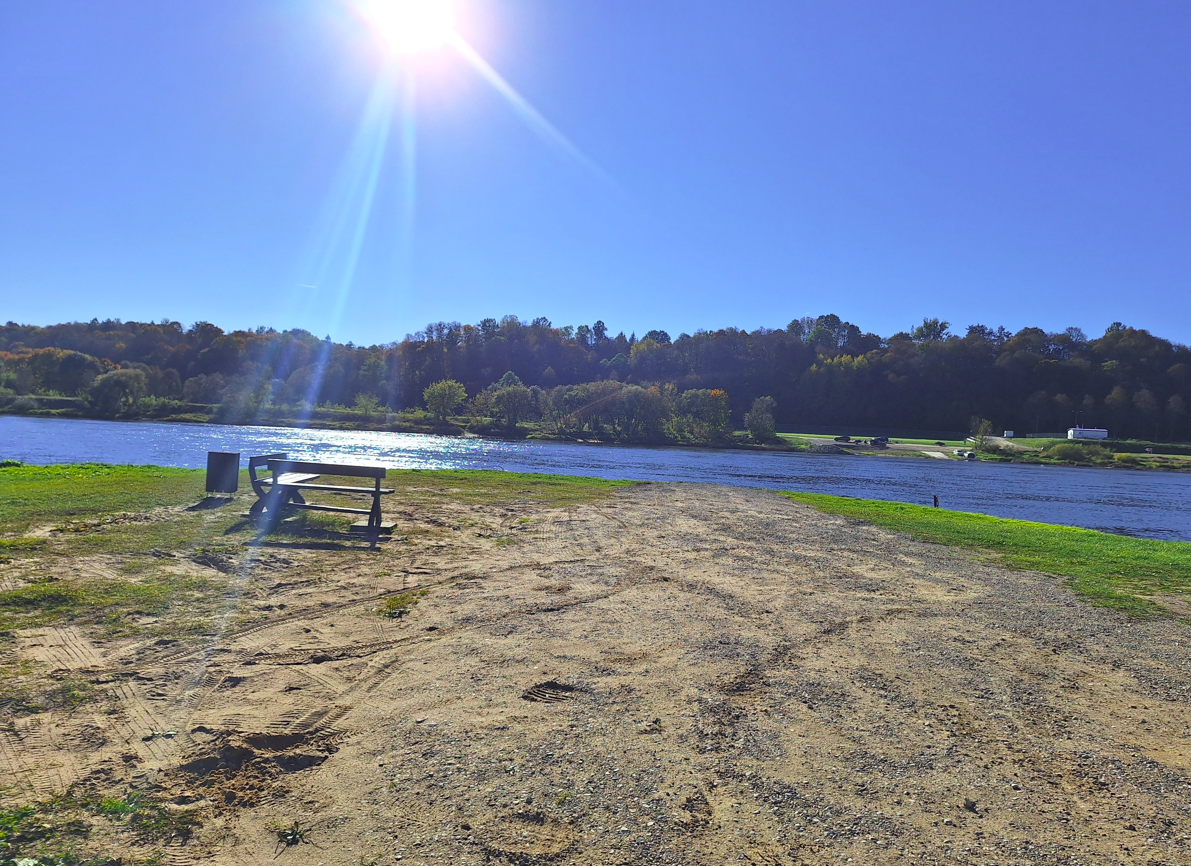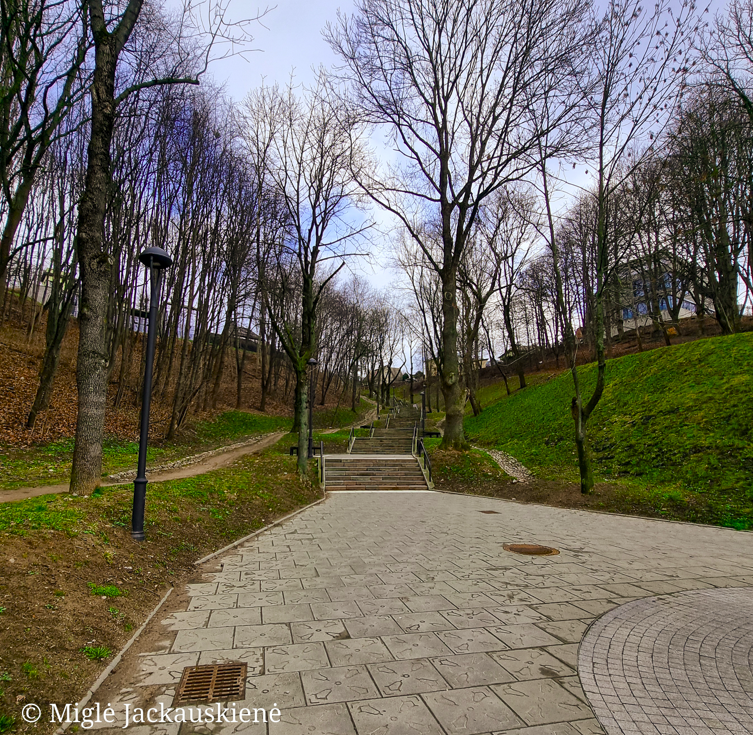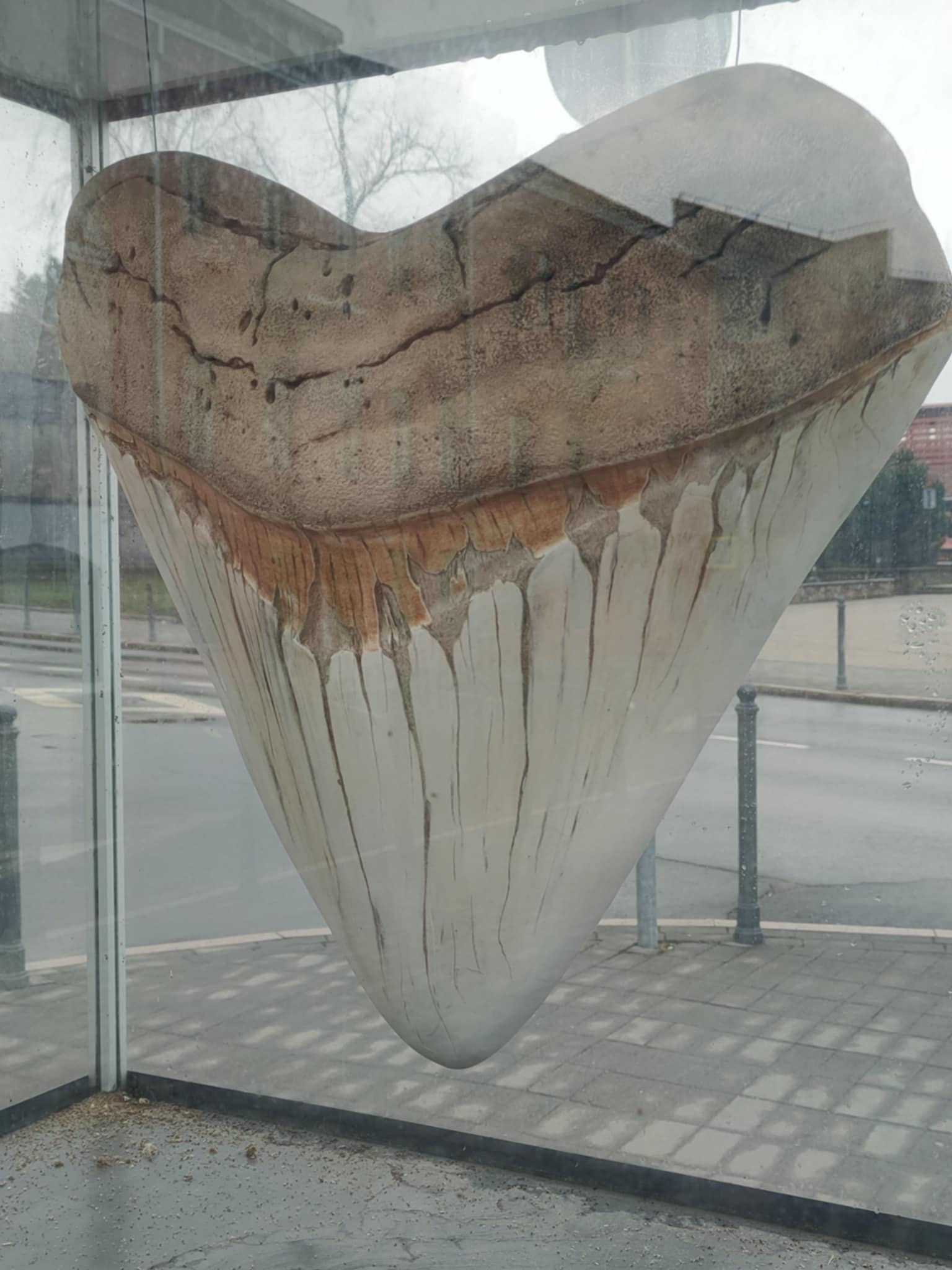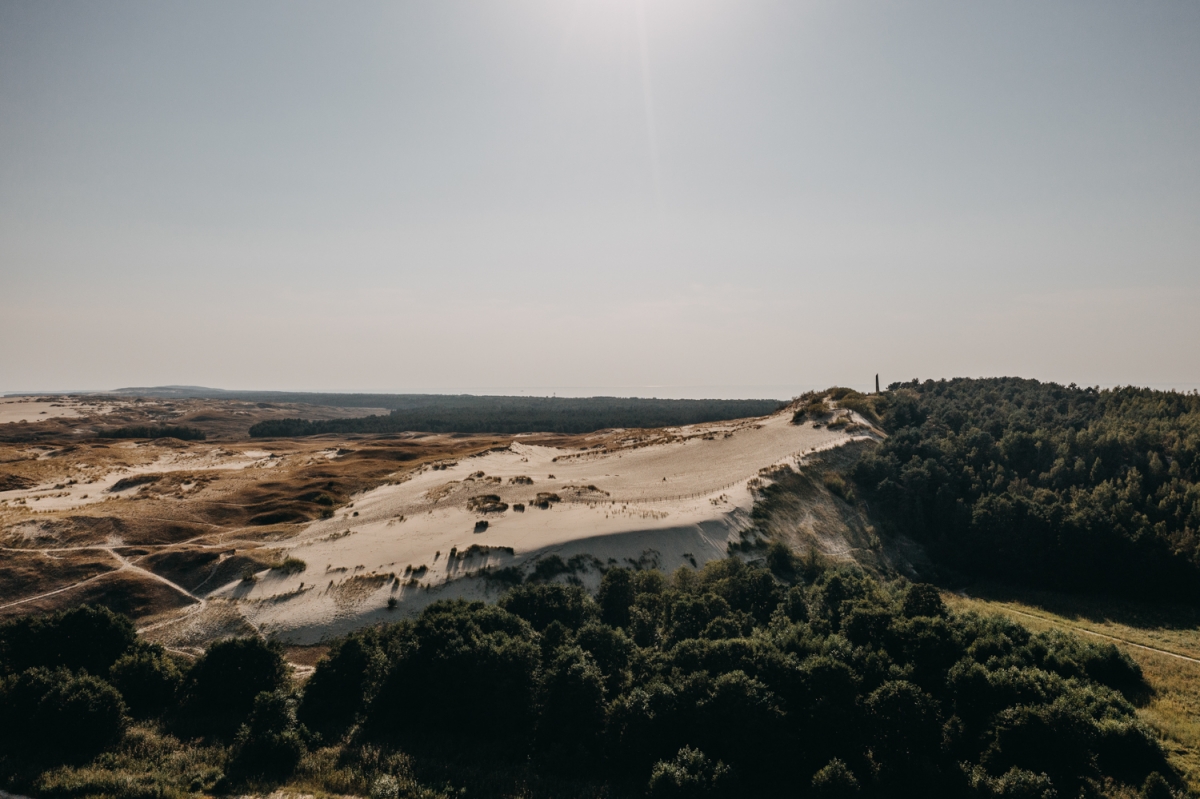Climbing the Parnidis Dune located on the southern side of Nida village, you will find yourself in the realm of the white dunes. This is the only place in the Curonian Spit National Park where a chain of shifting dunes has been preserved. From the Parnidis Dune, looking southward, you can see the shifting dunes of the Grobštas Nature Reserve and, in good visibility, the sand dunes extending into the territory of the Russian Federation. Scientists have determined that due to the prevailing westerly winds, these dunes move eastward at a rate of 0.5 to 10 meters per year.
Sand is a light and loose sedimentary rock that travels great distances when blown by the wind. Dunes move by transporting sand grains from the windward slope to the leeward slope. Sand grains travel in small ridges called "ruzgos" until they encounter an obstacle like a plant. In untouched hollows, the dune surface resembles the seabed.
These shifting dunes are also called
"white dunes." The light shades of the sand are due to the high quartz content, which ranges from 85 to 99 percent.
In the areas of shifting sand, you can see large grasses such as beachgrass (Ammophila arenaria), sand ryegrass (Leymus arenarius), and sand couch-grass (Elymus arenarius). These plants, with their strong rhizomes, are adapted to grow in the mobile coastal soil, and they also help to anchor the shifting sand and disperse the wind gusts with their leaves. In the shelter created by these sturdy grasses, more delicate plants like hawkweed (Hieracium umbellatum), sea bindweed (Calystegia soldanella), flax-leaved sandwort (Minuartia hybrida), and beach pea (Lathyrus japonicus) can thrive.
To protect the highly sensitive and vulnerable habitat of the white dunes, visitor flows are regulated, and certain areas are strictly off-limits. Please remember that it is prohibited to climb or descend the eastern slopes of the Parnidis Dune.




 Entertainment
Entertainment
 Sightseeing
Sightseeing
 Food establishments
Food establishments





























 55.293382, 20.991982
55.293382, 20.991982
 Get directions
Get directions